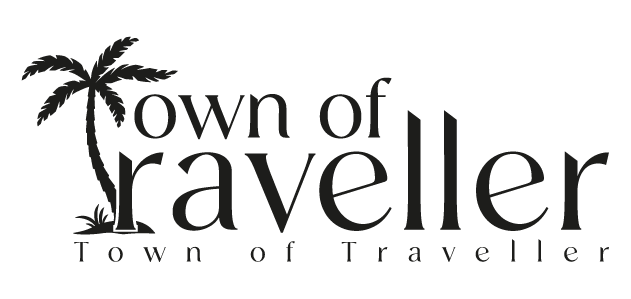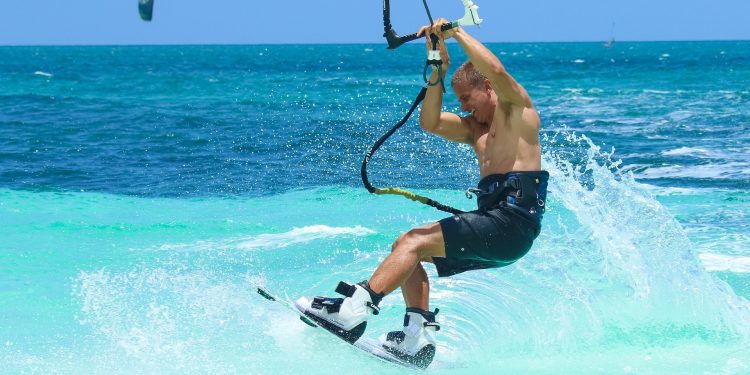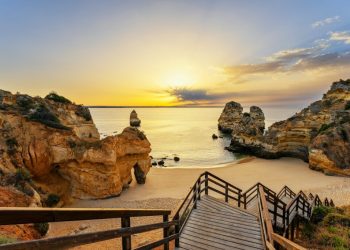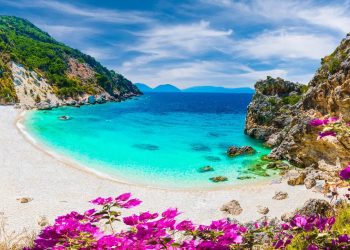If you’re thinking about taking up kitesurfing, or are simply looking for some new and exciting places to kitesurf, then check out our list of the best places to kitesurf in the world with a full guide. The sport of kitesurfing is one of the fastest-growing water sports in the world. And it’s no wonder why kitesurfing combines the thrill of surfing with the excitement of kite flying.
So, what are you waiting for? Get your kite and surfboard ready, and explore some of these amazing places for kitesurf:
Kalpitiya, Sri Lanka is among the best places to kitesurf
If you’re thinking of giving kitesurfing a try, Sri Lanka is an excellent choice. The island nation has plenty of great spots for beginners and experienced kitesurfers alike, as well as plenty of other activities to keep you busy when you’re not out on the water.
Sri Lanka has lately become a top kitesurfing destination due to the excellent wind conditions, where everyone can learn and progress at any position. Still, you’re presumably wondering what the primary kitesurfing season is and when is the best time to go then, If you’re planning to surf in Sri Lanka.
Before going deep into this content, let me tell you that this fantastic islet offers constant wind during nine months of the time, with two restricted seasons being summer and Downtime.
That means that Sri Lanka ranks as the number 1 windiest surfing destination in Asia. And then’s the question. Why is Sri Lanka so windy? Well, if you take a look into Sri Lanka’s strategic position, you can imagine how the hot winds that come from the Middle East strike into the Sri Lankan western seacoast in summer.
That makes the western seacoast a gracious destination for surfers from May to October. On the other hand, in downtime the winds come from Southeast Asia( northeast) but what makes it possible for us to surf at this time are the thermal winds. And great, that’s the reason why in summer we’ve important winds, and in downtime we’ve lighter winds but steadier
If you’re thinking of giving kitesurfing a try, Sri Lanka is an excellent choice. The island nation has plenty of great spots for beginners and experienced kitesurfers alike, as well as plenty of other activities to keep you busy when you’re not out on the water.
So, what are you waiting for? Grab your kite and board and head to Sri Lanka for some of the best kitesurfing in the world!
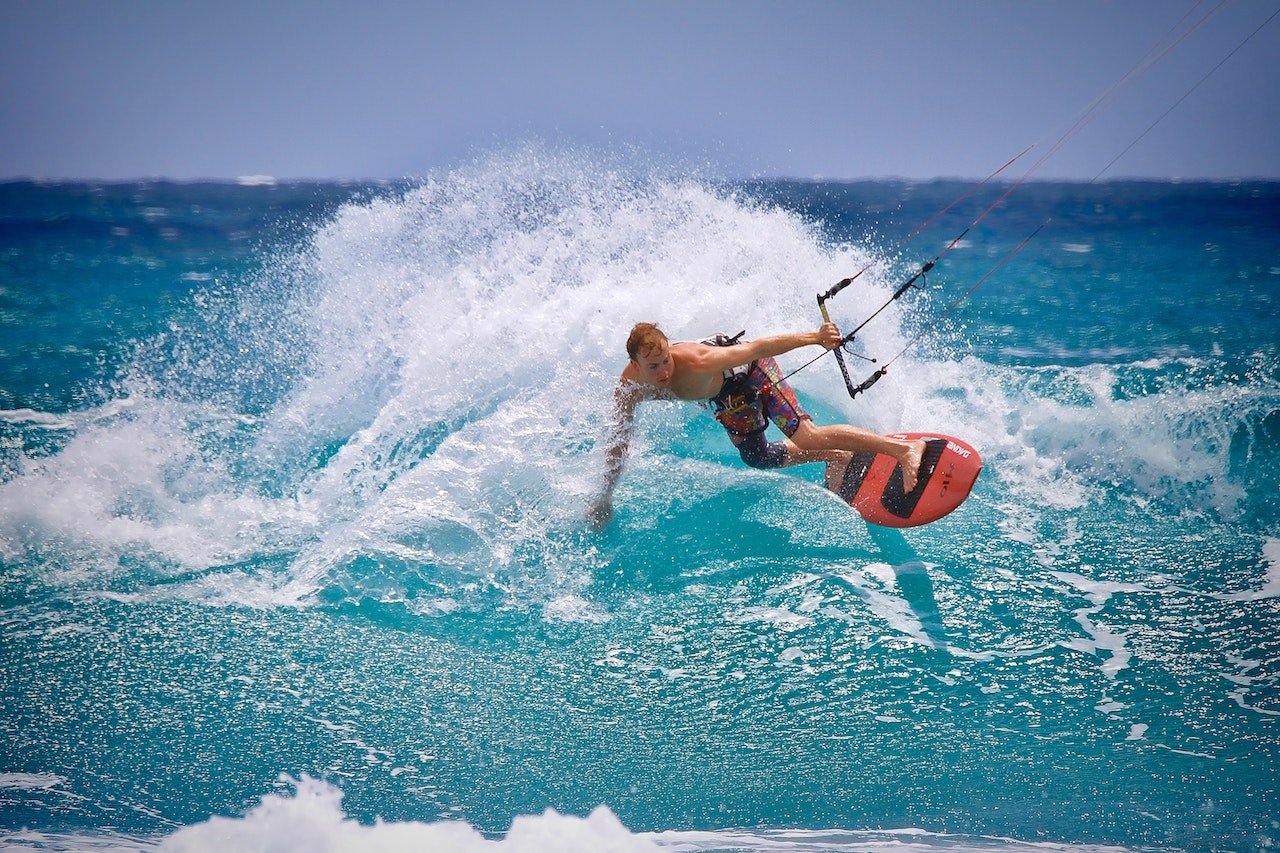
Praia do Prea, Brazil
Kitesurfing is a unique sport in which riders attach a kite to their feet, then ascend or “surf” on water through any path of turbulent wind. The currents and atmosphere in Prea are optimal for skilled kitesurfers because the coastline faces towards the open sea, with winds blowing in from West Africa.
Prea is a small town located in the northeastern state of Ceará, Brazil. Although it is not as widely known as other kitesurfing destinations, such as Hawaii or Australia, Prea has been steadily gaining popularity in recent years. The reason for this is simple: Prea is one of the best places in the world to kitesurf.
The coastline of Prea faces towards the open sea, which means that the winds blowing in from West Africa are some of the strongest and most consistent in the world. These conditions are ideal for experienced kitesurfers who are looking for a challenge. In addition, the water temperatures in Prea are relatively warm year-round, which makes it a great destination for those who want to kitesurf all year long.
If you’re interested in giving kitesurfing a try, or if you’re already an experienced rider looking for a new challenge, Prea should definitely be at the top of your list.
Tarifa, Spain
Tarifa is the kitesurfing destination in Europe, a land-locked city but with plenty of flat water to be found all around. There are world-class waves out at Cabo de Palos, or you can head north toward Tudela or down to Algeciras to find more secluded flat spots.
If you are looking for an adrenaline-pumping experience on your vacation, look no further than kitesurfing in Tarifa!
Maui, Hawaii, USA
Kitesurfing in Maui is a perfectly balanced sport that takes advantage of all four winds-the windward, trade, and leeward winds, as well as the windless days when the trade winds dominate. Maui is one of the birthplaces of kitesurfing in the world. May to September is kit surf season here in Maui! There are many popular kite spots in Maui, such as Kanaha Beach, Hamakua Poko, Flash Beach, Ka’a Point etc.
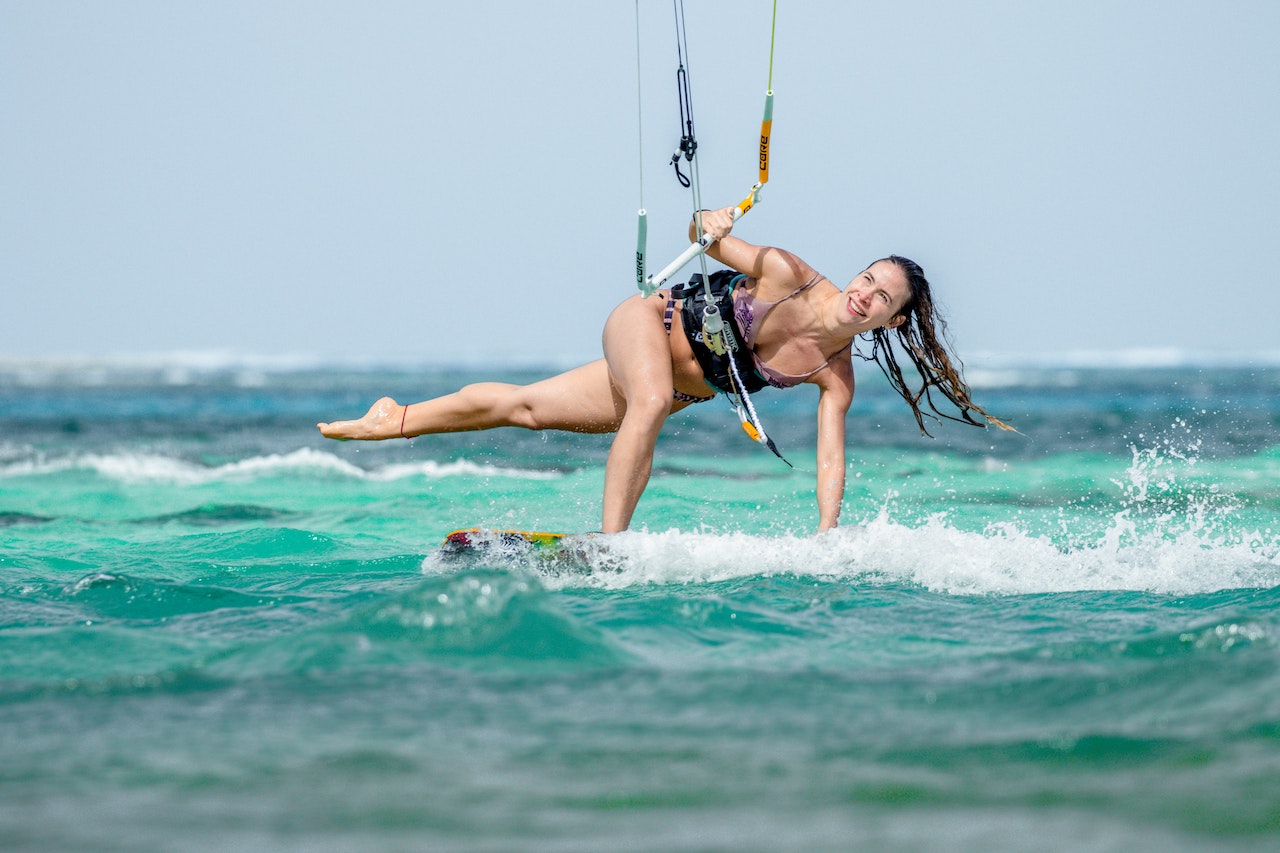
United Arab Emirates, Dubai
The United Arab Emirates is home to some of the most popular kitesurfing destinations in the world, including Dubai. Kitesurfing in Dubai offers a unique experience, with strong winds and plenty of sunshine all year round. The city is also home to a number of kitesurfing schools, making it the perfect place to learn how to kite.
Lake Garda, Italy
Lake Garda is one of the largest lakes in Europe and is a popular destination for windsurfers and kitesurfers. The lake has strong thermal winds and beautiful scenery, making it a perfect place to enjoy kitesurfing.
Cabarete, Dominican Republic
Cabarete is a small town located on the north coast of the Dominican Republic. This place also among the best places to kitesurf. It’s become a popular spot for kitesurfing due to its consistent trade winds and good waves. There are also several excellent kiteboarding schools in Cabarete if you want to learn how to kitesurf or improve your skills.
Dakhla, Morocco
Dakhla is a true paradise for kitesurfers, with miles of pristine coastline and endless waves. The wind here is reliable and the water is warm, making it a perfect place to ride all year round.
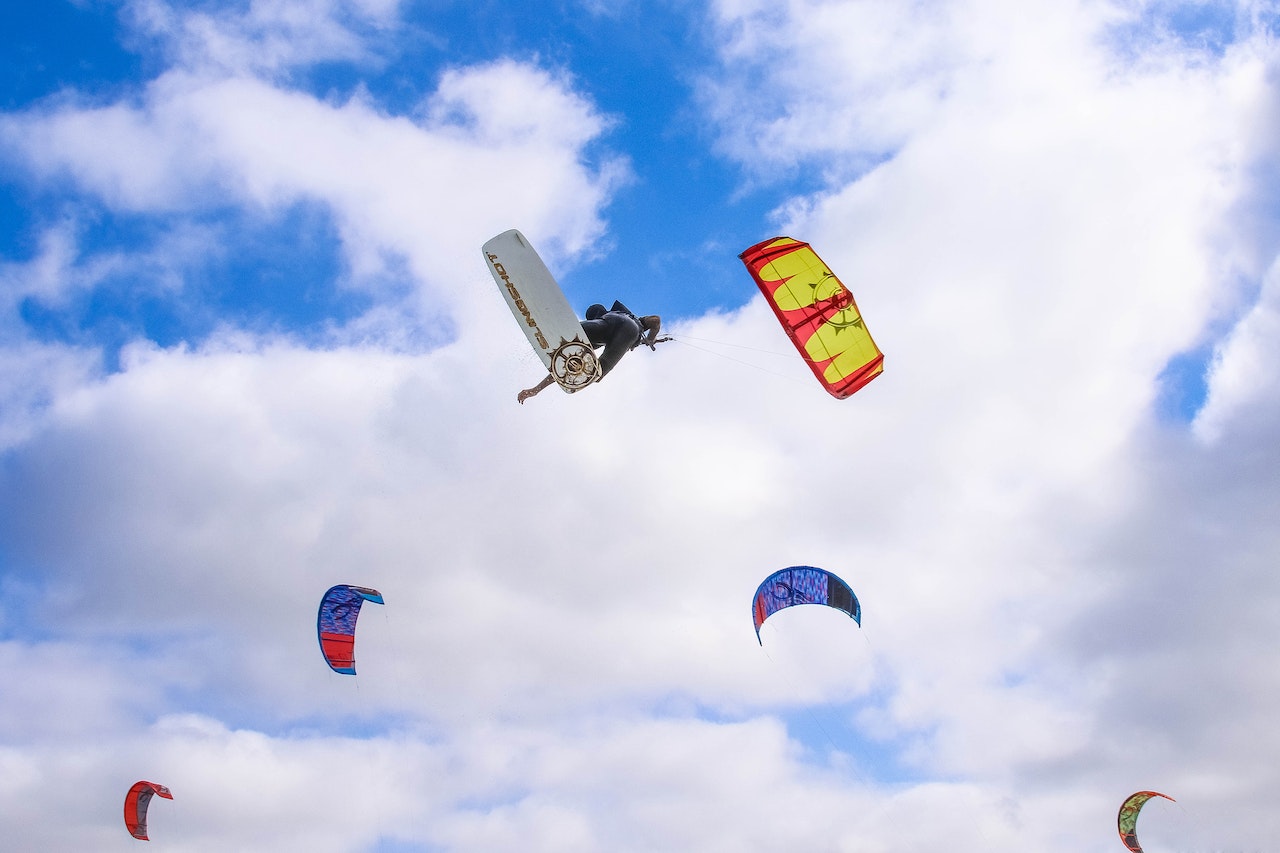
This best places to kitesurf article will give you information about all basic knowledge about kitesurf.
Kitesurfing Terms Everyone Should Know
When it comes to kitesurfing, there are a few key terms that you should know. Here are some of the most important ones:
-Kite: The kite is the large, wing-shaped object that you control to generate power and lift.
-Bar: The bar is the control device that you hold on to while kitesurfing. It’s connected to the kite via lines, and it’s what you use to steer the kite.
-Lines: The lines are the ropes that connect the kite to the bar. They’re made of sturdy material like Kevlar or Spectra, and they’re under a lot of tension when the kite is in use.
-Rigging: Rigging refers to the process of setting up your kitesurfing gear before you head out on the water. This includes attaching the lines to the bar and inflating the kite.
-Launch: Launching is how you get your kite into the air so you can start kitesurfing. There are a few different techniques, but most involve holding on to the bar and running with the kite until it takes off.
-Landing: Landing is how you safely bring your kite back down to earth after a session. Again, there are a few different ways to do this, but it generally involves slowly lowering the power of your kite until it touches down lightly on land.
Kitesurfing Basics
Kitesurfing consists of riding a kiteboard or wakeboard while being pulled by a kite across the water. The kite is powered by the wind and is flown through the power window, which is the area between the edge of the wind window and the center. To stay upwind, kitesurfers keep their kites at an angle into the wind. To turn, they move the kite across the power window.
Most people start kitesurfing by taking lessons from a certified instructor. Once you have mastered the basics, you can practice on your own. However, it is always best to have someone with you who can help in case of an emergency.
When you are first starting out, it is important to choose a spot with steady winds and plenty of room to maneuver. Beginners should also avoid areas with obstacles such as trees, buildings, or other people. Once you have chosen a spot, set up your kite according to the manufacturer’s instructions. Make sure all lines are properly attached and that everything is secure before you launch your kite.
Takeoff is one of the most difficult parts of kitesurfing. To achieve takeoff, quickly bring your kite up into the power window and then pull on the bar to generate lift. As soon as you feel yourself lifting off of the ground, start moving forward to maintain tension on the lines and keep from being pulled backwards. It takes practice to get this right
Safety Tips
- Always wear a life jacket when kitesurfing.
- Be aware of your surroundings and avoid areas with high winds or strong currents.
- Learn how to properly set up and operate your kitesurfing equipment.
- Make sure your kitesurfing instructor is properly certified before taking lessons.
- Never kitesurf alone, always have someone else with you in case of an emergency.
Flying Basics
Anyone can fly a kite with the right instructions. Learning to fly is the first step to becoming a kiteboarder. The following tips will help you get started:
- Choose a windsport location with good beginner conditions. Look for flat water and light wind speeds of 10-15 knots.
- Buy or rent a small kite and a board that is easy to control.
- Start by flying the kite in both directions without the board. This will help you get a feel for the power and movement of the kite.
- Once you are comfortable flying the kite, try body dragging on your stomach or back behind the kite. This will teach you how to control the kite while moving through the water.
- When you are ready, put on your board and start practicing getting up on your feet and riding around!
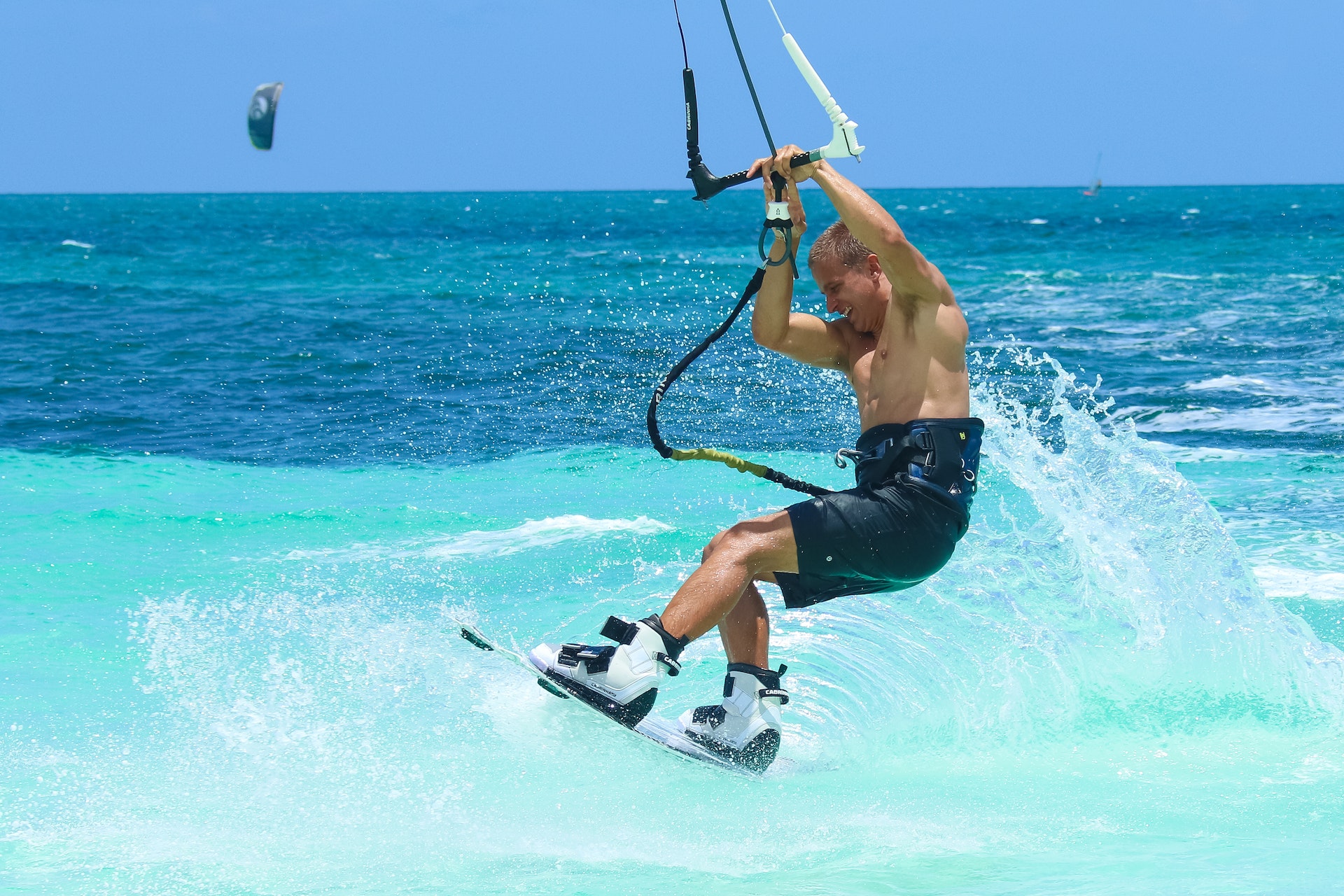
Safety When Releasing the Kite
When releasing the kite, always make sure that you are standing in a clear area away from other people and obstacles. Never let go of the kite while it is still in the air – wait until it has landed safely on the ground before letting go. If possible, have someone hold onto the kite while you’re getting ready to launch so that it doesn’t unexpectedly take off without you.
Learning To Tack
One of the most important aspects of kitesurfing is learning how to tack. Tacking is the act of turning the kite from one side of the wind to the other. This is a key maneuver that all kitesurfers must master in order to be successful.
There are a few things to keep in mind when learning how to tack. First, it’s important to always keep your kite low in the water when tacking. This will help you avoid any obstacles and maintain control of your kite. Second, make sure you lead with your front hand when tacking. This will help you keep the kite balanced and under control.
Finally, it’s important to practice, practice, practice! The more you tack, the better you’ll become at it. So get out there and start doing!
Why You Should Keep The Kite Low During Your First Few Sessions
If you’re new to kitesurfing, it’s important to keep your kite low to the ground during your first few sessions. This will help you get a feel for the wind and how the kite reacts to it. It’s also a good idea to practice in an open area with few obstacles.
What Type Of Board Is Best For You?
When you are starting out kitesurfing, it is important to choose the right board for you. There are three main types of kitesurfing boards: twintips, directionals, and foilboards. Twintips are the most popular type of board and are great for doing tricks. Directionals are best for riding in waves and foiling is a newer type of kiting where you ride on a board with wings attached to it, which allows you to fly over the water.
The best way to figure out what type of board is best for you is to try different ones out and see what you like best. But here are some things to keep in mind when choosing a board:
- Your weight: Heavier riders will need a bigger board with more volume to float them, while lighter riders can get away with a smaller board.
- The conditions you’ll be riding in: If you’re mostly going to be riding in waves, a directional board is probably your best bet. If you’re just going to be cruising
- around or doing tricks on flat water, a twintip is fine. And if you want to try something new and really get lifted up by the wind, go for a foilboard!
- Your skill level: If you’re just starting out, it’s probably best to go with a twintip or directional board. These boards are easier to ride and will help you learn the basics before moving on to more advanced
The equipment you need for kitesurfing
Assuming you would like a general list of the equipment necessary for kitesurfing:
-Kite
-Board
-Harness
-Safety Leash
-Wet Suit or Rash Guard
Of course, you need a kite to go kitesurfing! There are a variety of different types and brands of kites on the market, so do some research to figure out which one is best for you and your level of experience. You’ll also need a board. Again, there are many different types and brands available, so take your time in choosing the right one. It’s important to have a comfortable and well-fitting harness, as you’ll be wearing it for long periods of time while kitesurfing. A safety leash is essential to keep you attached to your kite in case of an accident, and finally, you’ll need a wet suit or rash guard to protect your skin from the elements.
How to get the cheapest equipment
There are a few things you can do to get the cheapest kitesurfing equipment. One is to buy used equipment. You can find good deals on used gear if you know where to look and are willing to put in a little work to find it. Another option is to buy last year’s model of equipment instead of the newest model. This can save you a lot of money, especially if you don’t need the latest and greatest features. Finally, don’t forget to shop around and compare prices before buying anything.
With so many incredible places to kitesurf in the world, it’s hard to narrow it down to just a few. But these five destinations are definitely some of the best places to kitesurf, whether you’re a beginner or a seasoned pro. So pack your kites and your board, and get ready for an adventure of a lifetime.
